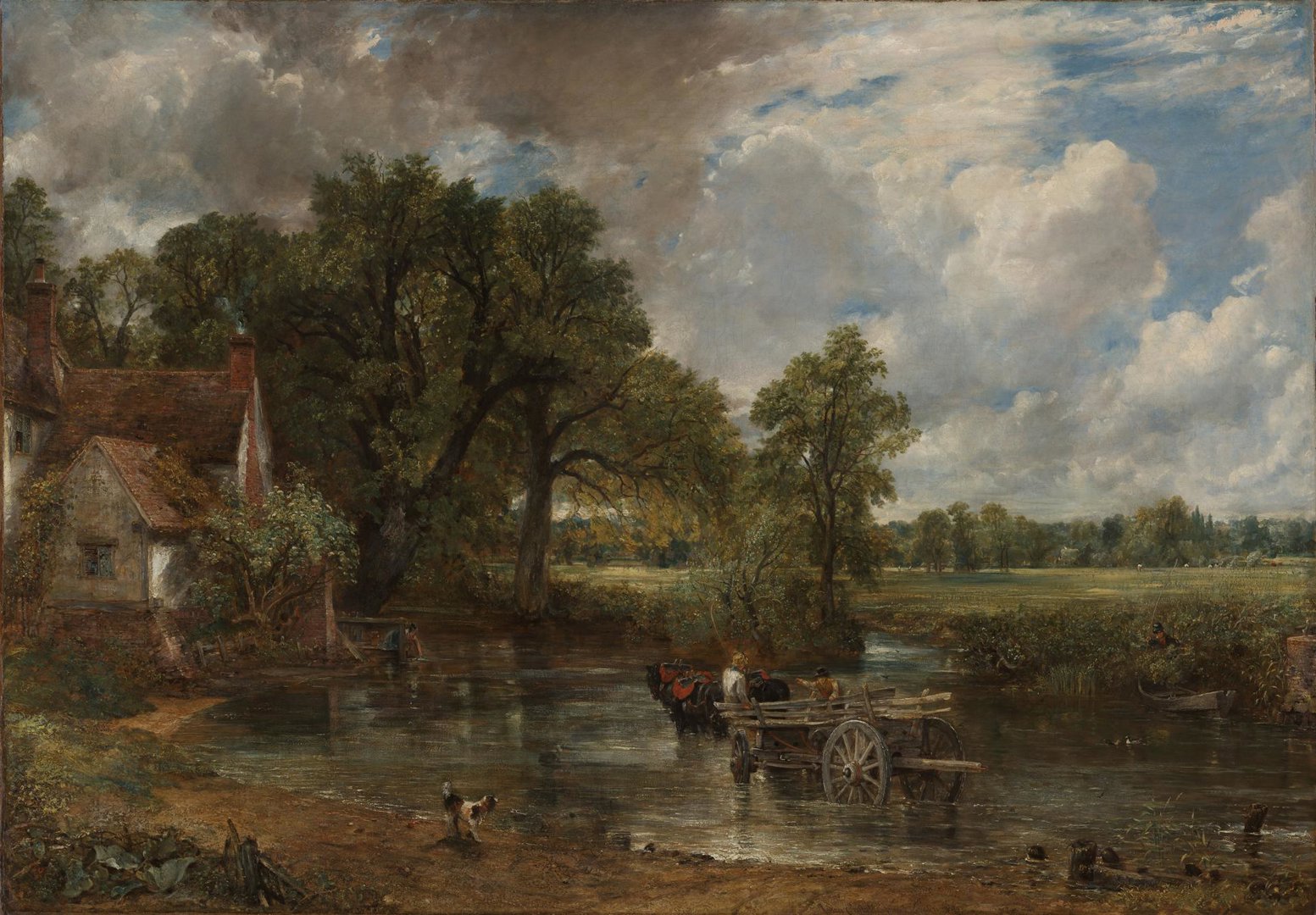Constable’s 'The Hay Wain'
Audio description
This is a description of an oil painting called ‘The Hay Wain’ by the British artist John Constable. It is a large painting – just over a metre high and two wide - it was painted and first exhibited in 1821. It depicts an idyllic rural scene of a hay cart crossing a tree-lined river running through the English countryside. This sun-dappled farming scene projects a mood of tranquillity and contentment; a mood quite at odds with the lived experience of many agricultural workers at this time. The image depicts a millpond on the River Stour at Flatford on the border between Essex and Suffolk. The dark, shallow river idles slowly along the lower third of the painting. It curves away, to the far left, passing a picturesque farmhouse. The warm sun gives the triangular gable of its white walls and red roof tiles a soft golden glow. One of its lead- lined windows is pushed open, cooling the house on this warm summers' day A woman on a wooden platform, which juts out from the side of the house into the river, kneels with a jug to collect water. To reach the river for a paddle, it would be necessary to take a few steps across the sandy silt of the riverbank in the foreground. Standing here on the sweeping curve of the river bank is a fluffy black and white farm dog, looking out attentively at the hay cart, or ‘hay wain’, as it crosses. The wooden slatted cart is empty. It is being pulled away from us by three sturdy black horses, heading across the water They are directed
by two workmen in white shirts, wearing hats. One holds a whip, while the other raises one arm in the direction of a gap in the low foliage along the far-river bank. The Hay Wain is probably headed towards this spot to ford the river, heading to pick up the hay being harvested in the sun-kissed meadow beyond. Here the field is bordered by distant trees and peopled by small white shapes indicating the presence of labourers, stooped over harvesting the hay, the midday sun glinting off of the shirts on their backs. The heavy work collars of the horses are brightly decorated with red fringing, contrasting with the greens of the trees and reeds lining the riverbank. On the left of the painting, on the far riverbank, there is a row of broad, mature trees casting shade. Above the trees the upper third of the painting is filled with billowing clouds, darkening in places, with small patches of blue sky showing through. To the far right of the canvas, the riverbank gives way to a dense thicket where a small wooden rowing boat is moored. Appearing through the reeds, pushing his way to the boat, is a man in a black hat with a fishing rod. At the extreme right edge of the painting there is a red pillar, the only indication of the nearby Flatford Mill which had been operated by the Constable family for nearly 100 years. This was country that Constable knew well from his boyhood, the mill being a
mile from his birthplace at East Bergholt. Many aspects of this painting were revolutionary at the time. Constable was an exception in advocating sketching outdoors. There is a sense of freshness and closely observed nature in this painting – ducks dabble in the river as swifts swoop low across its surface to pick off the flies. Constable uses tiny dabs of white paint to capture the effect of sunlight flickering on fluttering leaves – his critics called it ‘Constable’s snow’. This shocked his contemporaries who were used to the blended brushwork, brown tones and smooth surfaces of traditional landscapes. Constable’s keen observation of nature is also apparent in the accuracy of his skies. Here he captures the vastness of a changeable Suffolk summer sky with one ominous raincloud. Although the painting evokes a Suffolk scene, it was in fact created in Constable’s studio in London. Working from open-air sketches made over several years, It was painted at a time of civil unrest and agrarian riots. Constable’s determination to capture the idealised rural Suffolk landscape of his boyhood, must in part have been due to a sense that rural life was changing due to rapid industrialisation and the pushback by workers against the economic and social disparity growing in the country. Constable did not call this picture, ‘The Hay Wain’ – it was a nickname
given to it by his friend Archdeacon Fisher. When it was sent to the Royal Academy in 1821 with its given title ‘Landscape: Noon‘, it was greeted favourably by reviewers who declared it “approaches nearer to the actual look of rural nature than any modern landscape whatever”. It didn’t sell in Britain so Constable reluctantly sold it to a French art dealer who exhibited the painting in Paris . There it caused a sensation, won Constable a gold medal from the French king, and would serve to inspire a new generation of French artists to paint directly from nature.


